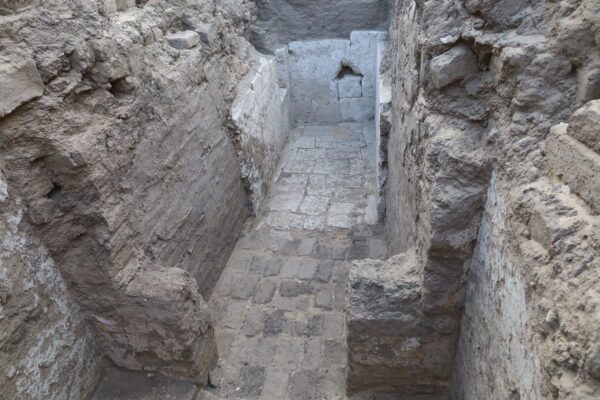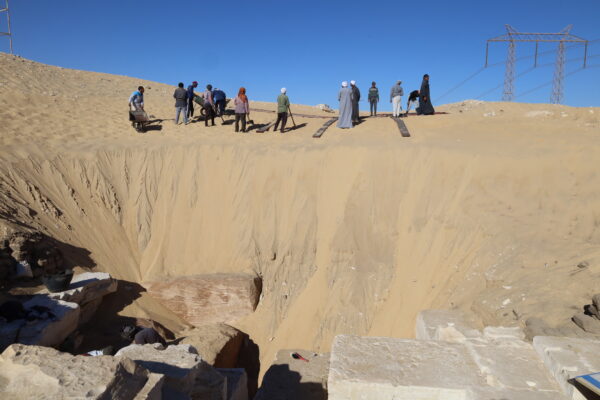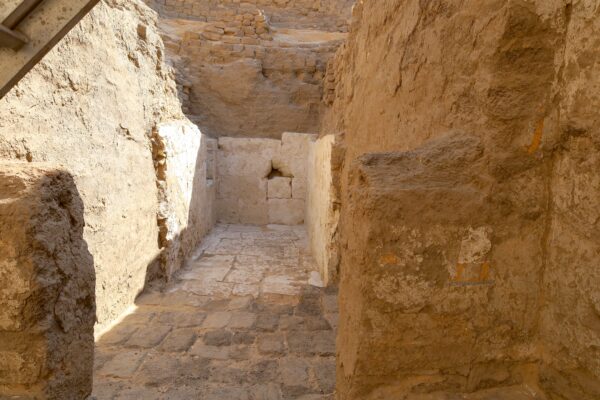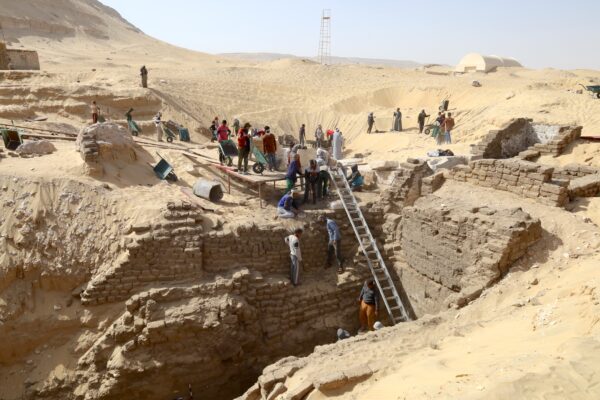The dig site at Anubis Mountain, near the ancient city of Abydos in upper Egypt. All photos: Dr Josef Wegner/Penn Museum
A mission to uncover known tombs from a little understood time of Egypt’s past yielded a surprise discovery of its own – an unknown large tomb.
In January, American and Egyptian archaeologists found the 3600-year-old tomb of an unknown pharaoh (ruler) buried seven metres underground at the site of the ancient city of Abydos.
Teams from Penn Museum in the US and the Egyptian government digging in the ancient necropolis of Anubis Mountain came across a limestone burial chamber with decorated entryway and rooms capped by 4.8m-tall mud-brick vaults.
The newly unearthed tomb is much larger than that of a later pharaoh, Seneb-Kay, or any other known ruler from the same dynasty buried there, according to Dr. Josef Wegner, the museum’s Curator of the Egyptian Section and a University of Pennsylvania professor in Egyptian Archaeology.
Hieroglyphic texts in yellow bands once recorded the pharaoh’s identity but not any more, he says in a press statement released by the museum.
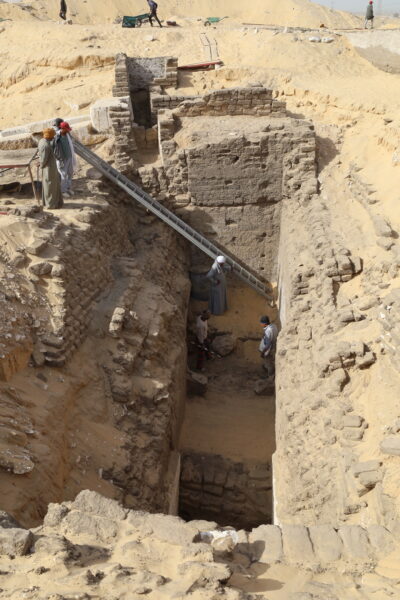
The tomb was found nearly 5m under the sand. Image Dr. Josef Wegner/Penn Museum
“The king’s name was originally recorded in painted scenes on plastered brickwork that decorated the entrance to the limestone burial chamber,” Dr. Wegner explains.
“However, ancient tomb robbers damaged the hieroglyphic texts and not enough survives to read the king’s name.”
Dr Wegner believes there are several possible owners of the new tomb, including two pharaohs named Senaiib and Paentjeni whose tombs’ locations remain unknown.
He says the new discovery confirms the burial of other rulers in, and around, the tomb enclosure of pharaoh Neferhotep I, who ruled a century before the Abydos Dynasty.
The museum says excavations at the new tomb will continue this year at Anubis Mountain, taking in roughly 10,000 square meters of desert terrain, using state-of-the-art technology.
“Ongoing excavations also include protection, site management, and conservation of these structures. That is a part of our commitment to the site in co-operation with the Egyptian Ministry of Tourism and Antiquities,” Dr. Wegner explains.
“Together, we have opened Seneb-Kay’s and Senwosret III’s (see below) tombs as visitable monuments; we’re in the process of opening other ones in the very same area where this new tomb was found.
“This discovery is a new window to understanding the origins of the enigmatic Abydos Dynasty,” he says.
ABYDOS AND A LOST DYNASTY
According to the museum:
- Abydos is one of upper Egypt’s most ancient cities and is located about six miles from the Nile River.
- The sacred city doubled as a royal necropolis, the resting place of the first pharaohs.
- Although the pharaoh buried in this tomb has yet to be identified, he is believed to have reigned from 1640-1540BC during a time that yielded important social and technological changes even as Egypt broke up into warring kingdoms.
- One of these kingdoms was the Abydos Dynasty, pharaohs who ruled part of Upper Egypt and whose rule was first confirmed in 2014 during excavations led by Dr. Wegner.
- That same year (2014), his team uncovered the tomb of Pharaoh Seneb-Kay, another Abydos Dynasty ruler.
- Similarities in decoration and architecture between the tomb excavated in 2014 and now 2025 led museum archaeologists to believe that the new tomb may belong to a predecessor of Seneb-Kay.
- Senwosret III ruled Egypt from 1878 to 1860BC, the fifth rule of the 12th Dynasty whose military campaigns gave rise to peace and economic prosperity. (Source: World History Encyclopedia)
- A limestone burial chamber.
- The tomb was buried 4.8m down.
- The chamber with decorated entryway.
- Excavating the tomb.


